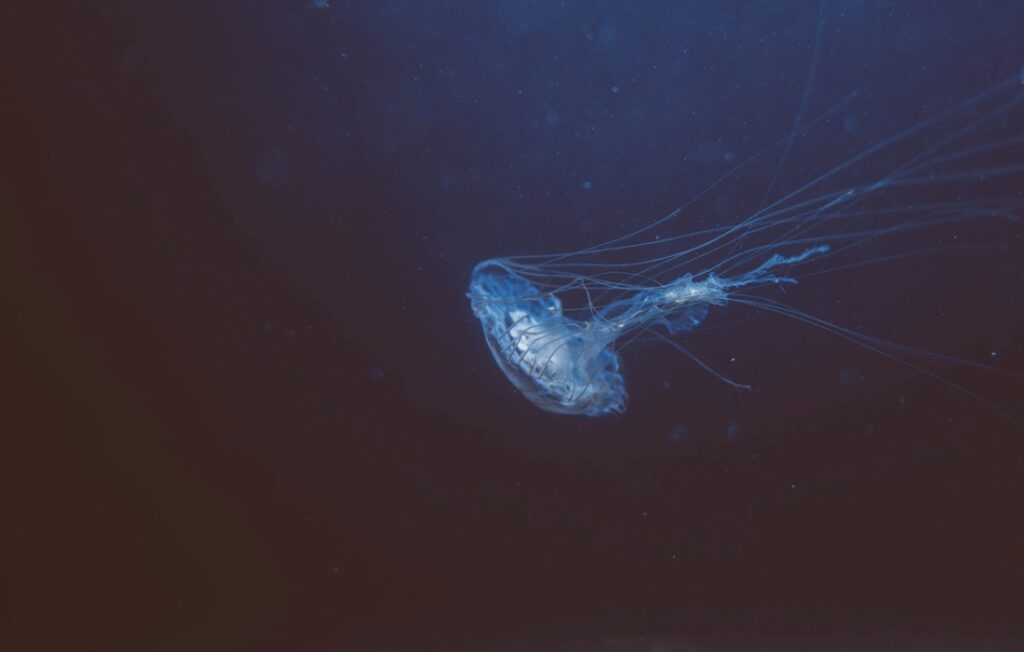“The sea is not made of water. Creatures are its genes.” ― Adam Nicolson
Our global oceans are a massive resource; from maintaining global temperatures and weather patterns to providing critical food and mineral resources, we simply could not live without them. And yet, in total, we’ve managed to explore and map less than 20% of them. (Less than the amount of surface area we’ve explored on Mars and the moon.) And while this is a crazy statistic in and of itself, what’s even more wild is the thought that what we have discovered—and some of the crazy species that live in the oceans’ depths—is just a drop in the bucket.
And there’s a reason for this. The ocean’s depths—and the extreme pressure that exists there (why we’ve been able to explore so little of it to date)—enable even greater biodiversity to exist. With an average ocean depth of 12,000 feet (and a maximum depth of close to 40,000 feet), scientists have been able to document roughly 226,000 species to date. Of this, the vast majority inhabit the top 660 feet of the ocean; what’s known as the Sunlight Zone.
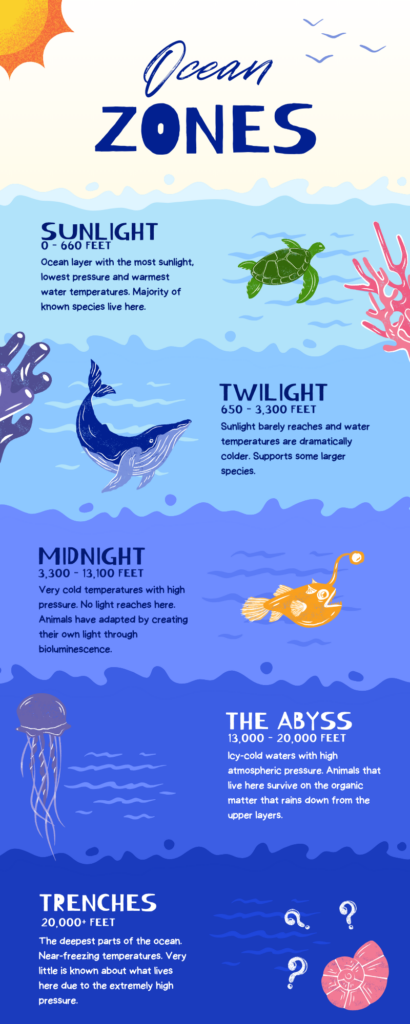
Why Does This Matter?
The vast majority of animal, bacteria, and archaea (another type of microorganism that’s common on earth) biomass exist in marine and deep subsurface biomes. The “deep subsurface” includes seafloor sediments as well as the oceanic crust. While bacteria and archaea can also be found in terrestrial (land) subsurface (earth “material”: soil, rock, etc.), the importance of the ocean for the biodiversity of these organisms cannot be understated.
Biomass is the measure of earth’s organic matter. Measuring by biomass rather than number of species or population size enables us to look at the location and spectrum of all life on earth, including microorganisms which are massive in quantity but tiny in scale. While the oceans only account for approximately 25% of all known species, they overwhelmingly account for 78% of biomass, underscoring the importance of these ecosystems for life on earth.
Diversity in the Depths
Not everything that lingers in the deep sea is as horrifying as modern depictions in pop-culture (or the deepest corners of Reddit) might have you believe. In fact, you might be surprised at the unique and colorful ways many critters have adapted to living in some of the coldest, darkest conditions on earth. We’ve hand-selected a few of our favorites to share with you so we can celebrate the absolute wonder of the oceans at all levels—even the spooky ones! (Don’t worry—we’ve weeded out the really creepy ones. Those definitely do exist, but luckily for us humans, they’re nearly impossible to see in person given the depth and high-pressure conditions where they live. You have nothing to fear!)
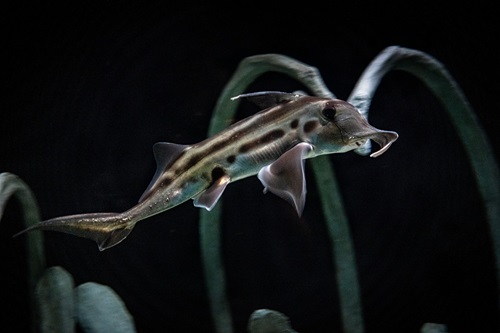
Elephant Fish
Maximum Observed Depth: 2,000 feet
Located in the South Pacific Ocean, the Elephant Fish is named for the trunk that protrudes from its face similar to the snout of our favorite pachyderms. These ocean-dwellers are not to be confused with their freshwater counterparts, Elephantnose Fish, which live in freshwater rivers throughout Central and West Africa (also with a cute little snoot of their own).
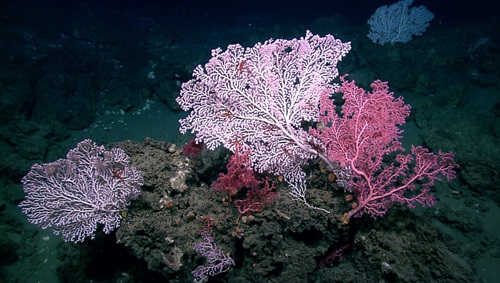
Bubblegum Coral
Maximum Observed Depth: 6,200 feet
These florescent pink coral “fans” attach directly to the sea floor in cold water conditions where they grow upward and outward, similar to trees on land. Bubblegum coral are the largest species of branching, fan-like coral structures (known as gorgonian colonies) and have been observed to grow as tall as 20 feet. Unlike warm water corals, which get their food and color from the algae that grow on them, deep sea corals like our Bubblegum friends here are filter feeders, consuming phytoplankton and other organic matter that floats by. Possibly how they get their color? Currently unclear.
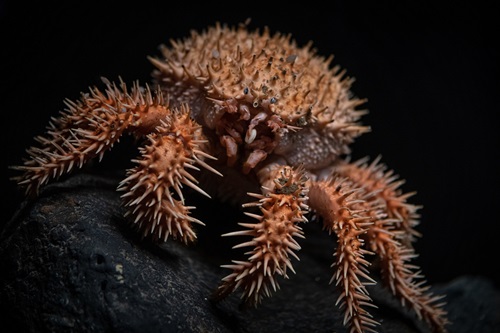
Japanese Porcupine Crab
Maximum Observed Depth: 6,600 feet
A species of King Crab, these spiky crustaceans are at home in the Pacific Ocean, found off the coast of—you guessed it!—Japan. With very few natural predators due to their prickly appearance, they spend their time hunting smaller prey (like mites) on the sea floor. Now let’s address the intrusive thought that everyone is having: no, you cannot pet it. Even though you might really want to.
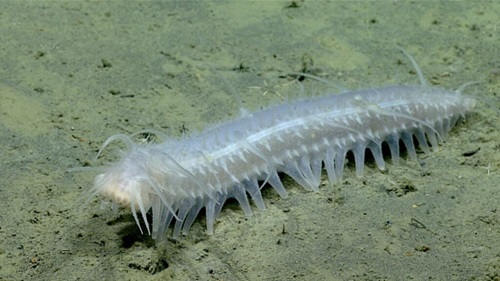
Glowing Sea Cucumber
Maximum Observed Depth: 7,500 feet
While it might not look particularly colorful here, this glowing sea cucumber emits swirling waves of blue light when frightened, which is meant to scare away predators. Or, at least, that’s the theory. This bioluminescence may also be a way to communicate or find food… scientists aren’t quite sure. Currently, there are at least 10 identified species of sea cucumber (of the 1,200 known to science) that can glow.
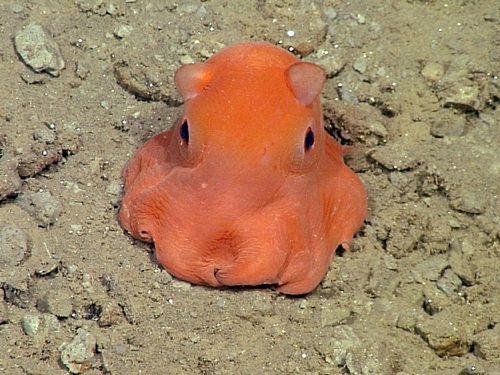
Flapjack Octopus
Maximum Observed Depth: 7,700 feet
We’re pretty sure we’ve found your new favorite marine animal (at least, it’s definitely ours!) Introducing the flapjack octopus. This little dude spends most of its time hanging out in the mud on the ocean floor, but it’s also been spotted swimming freely through the water (at which time it looks like a small umbrella). Its name comes from its ability to press itself flat against a surface when startled, looking very much like a pancake (a.k.a. flapjack).
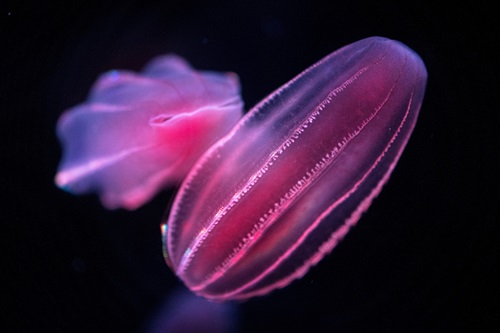
Abyssal Comb Jelly
Maximum Observed Depth: 9,200 feet
With a maximum length of a whopping three inches, these deep-sea jellies are certainly smaller than they appear in photos, but that doesn’t make them any less fascinating! Deep in the Midnight Zone of the ocean where many—if not most—creatures are able to produce their own bioluminescence, these cannibalistic critters (yes, you read that right, abyssal comb jellies are often on the hunt for other comb jellies) have a uniquely designed crimson stomach to help them absorb and disguise the glow of their prey.
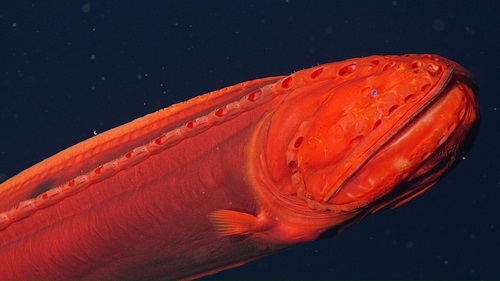
Whalefish
Maximum Observed Depth: 11,500 feet
The stark red appearance of this Midnight Zone-dwelling fish acts as a natural form of protection. Because red light does not travel far, it keeps the whalefish—and many other deep-sea species—protected from predators. Despite what its name would have you believe, the whalefish is not particularly large, reaching a maximum length of 16 inches. Instead, it’s named for the shape of its body, similar to that of a baleen whale.
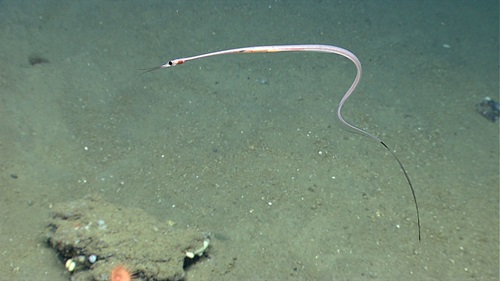
Slender Snipe Eel
Maximum Observed Depth: 13,000 feet
This deep ocean predator uses its long, bird-like beak (which gives it its nickname “deep sea duck”) to snatch up its prey. While lightweight due to their slender form (as their name suggests), these eels can reach up to five feet in length. Not a lot is known about the behaviors of slender snipe eels due to their difficult-to-reach habitat.
If you are interested in learning more about the crazy creatures that inhabit our deep seas, we highly recommend the Animals of the Deep series by the Monterey Bay Aquarium Research Institute. (If you were at all creeped out by any of the sea critters shown here, this may not be for you. Viewer discretion is advised.)
